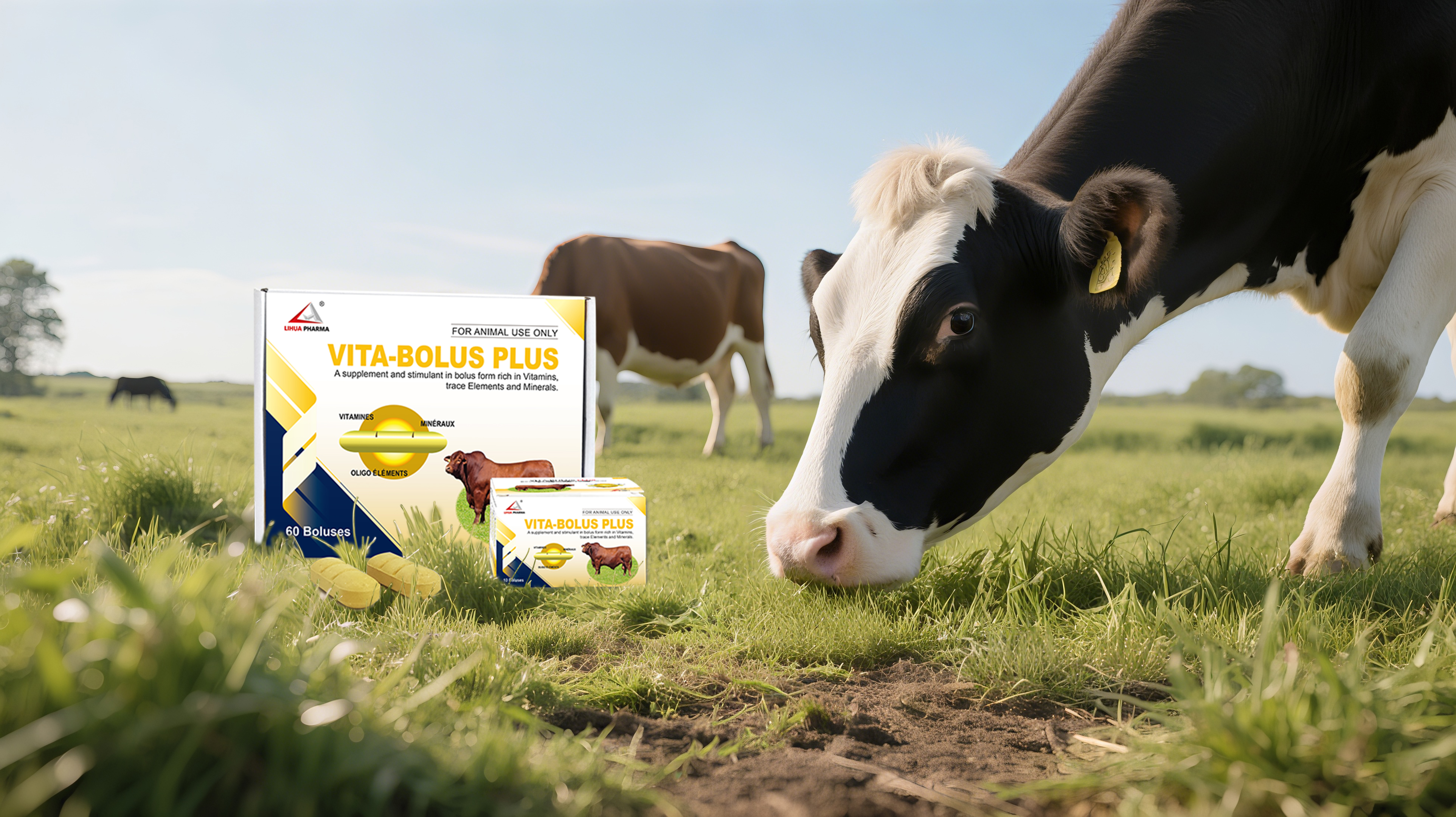Multivitamins are nutritional supplements developed specifically for large livestock (such as cattle and sheep). They have a wide range of indications, suitable for treating various diseases caused by vitamin deficiencies, including night blindness, reproductive disorders, rickets, white muscle disease, anemia, and hoof diseases. Meanwhile, they can provide nutritional support during periods of animal stress (such as transportation, high temperatures, and illness) and enhance the body’s resistance. In terms of pharmaceutical properties, they combine fat-soluble vitamins (A, D, E, K, etc.) with water-soluble vitamins (B complex, C, etc.). All components work synergistically, allowing for rapid absorption and utilization by the animal’s body, exerting the effects of supplementing nutrition and regulating metabolism.
- Fat-soluble vitamin deficiencies: Vitamin A deficiency causes night blindness (with an incidence rate of 12%) and reproductive disorders (18% decrease in conception rate); insufficient vitamin D leads to rickets in young animals (25% increase in risk of onset); vitamin E deficiency triggers white muscle disease (40% increase in calf mortality).
- Water-soluble vitamin deficiencies: Vitamin B12 deficiency results in anemia (accounting for about 8% of the population); biotin deficiency increases the incidence of hoof diseases in dairy cows by 30%; vitamin C deficiency exacerbates respiratory infections during stress periods (30% increase in risk).
- Correcting deficiencies: After 1-2 weeks of supplementation, the remission rate of eye symptoms caused by vitamin A deficiency reaches 90%, and the cure rate of vitamin B12 deficiency-induced anemia exceeds 85%.
- Enhancing production performance: Supplementation with vitamins A and E during the breeding period can increase the conception rate by 15-20%; adding biotin to dairy cows reduces hoof diseases by 40% and increases milk production by 5-8% (data from Journal of Animal Science, 2023).
- Strengthening stress resistance: Supplementation during the stress period can reduce the infection rate by 30% and shorten the recovery time by 20% (OIE 2023 study).
- Strong adaptability: Developed according to the nutritional needs of different species, it can accurately meet the vitamin supplementation requirements of large livestock at different growth stages.
- High efficiency and safety: Produced using advanced technology, it has high purity and a bioavailability of over 90%. When used according to the dosage, there is no risk of toxicity. Clinical verification shows that it can reduce veterinary costs by 12-18% (data from Veterinary Record).
- Convenient and practical: Available in both liquid and solid formulations. The liquid can be directly mixed with drinking water, and the solid can be mixed with feed, which is suitable for large-scale group use and can save labor costs.
Post time: Jul-09-2025



